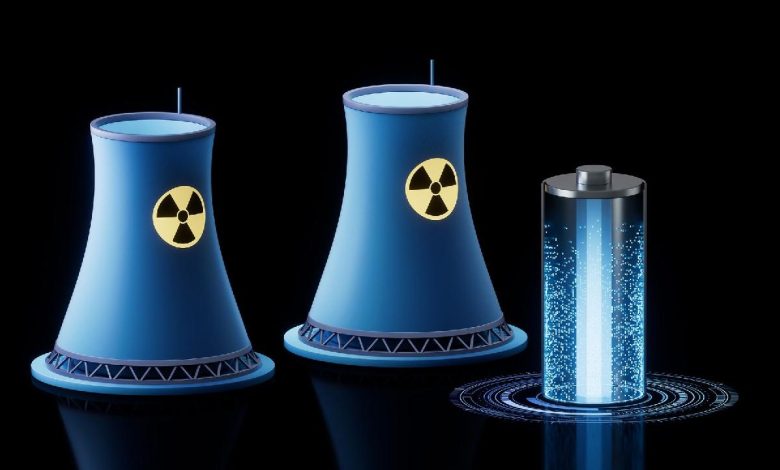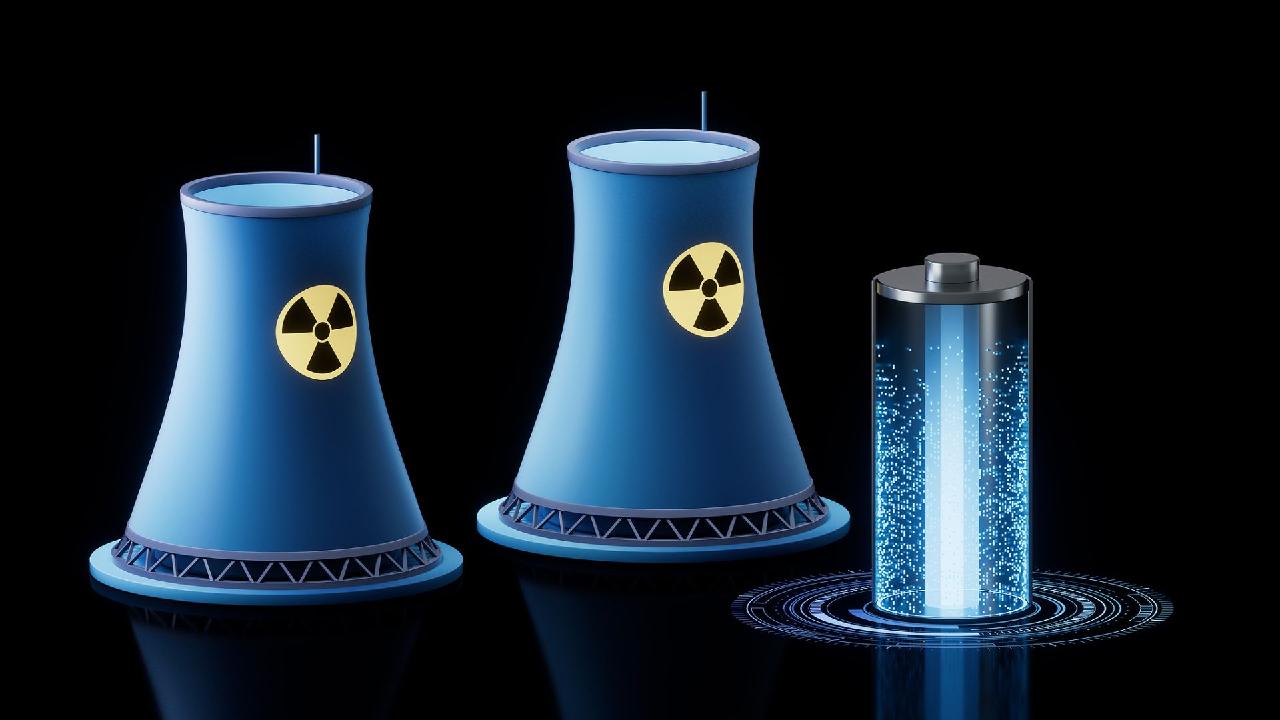Portable nuclear batteries? We're closer, but there's a small problem


The phrase “nuclear battery” might sound impossibly futuristic – but it’s a theory that was proven more than a century ago, was first put into practice seven decades ago and has just come a step nearer everyday usage… although there’s still a way to go yet.
The first atomic battery (it means the same thing) was created in 1912 by Henry Molesey, a brilliant young physicist whose death during World War I was described by Isaac Asimov as “the most costly single death of the war to mankind generally.”
Molesey’s battery harnessed beta particles emitted from radium. If that sounds a bit like a nuclear reactor in a power station, it partly is, except that it doesn’t cause a chain reaction.
World War II truly kickstarted the atomic age, with the 1950s bringing attempts to use the new power source for applications ranging from car engines to hearing aids and heart pacemakers.
While later worries about the potential downsides of nuclear scared off many of the public uses, they were more successfully applied in the space race, due to a certain very useful attribute: longevity.
<img src='https://newseu.cgtn.com/news/2024-10-22/Portable-nuclear-batteries-We-re-closer-but-there-s-a-small-problem-1xSYJTjfDr2/img/64949fe075b748ab965280dabd02dbb2/64949fe075b748ab965280dabd02dbb2.jpeg' alt='Voyager I's nuclear battery has lasted nearly 50 years, and a whole lot of miles. /NASA/JPL-Caltech/Science Photo Library via CFP'
Relying as they do on the slow decay of radioactive substances, nuclear batteries can last for decades. That’s why they were used from the 1950s onwards by both Soviet Union and U.S. spacecraft.
Indeed, they’re still in use, powering Mars rovers and deep-space probes. Voyager I, launched in 1977, has a nuclear battery that’s still going 47 years and 15 billion miles later, beyond the solar system.
Voyager‘s battery is a radioisotope thermoelectric generator (RTG), in which a small amount of plutonium-238 decays, emitting heat which is then harnessed to create a low but reliable level of electricity. It gets weaker over time as the plutonium mass decreases, but given the half-life of plutonium is 87.7 years, it’s still markedly longer-lasting than even your most expensive-brand AA batteries.
With no moving parts capable of breaking down, RTGs have also been used for remote and automated equipment back on Earth, from uncrewed lighthouses to Arctic air force stations.
But what’s the state of the art now?
The latest innovations
Coined in 1965 by the co-founder of Intel, the rule of thumb known as Moore’s Law states that the number of transistors in an integrated circuit doubles about every two years. And the miniaturization of tech has continued apace ever since, with modern nano-scale technology turning the tiny into the mighty.
In early 2024, Chinese startup BetaVolt announced a new coin-sized nuclear battery which it claims can work for 50 years. Unlike the RTGs mentioned above, which are thermal converters, this is the other major type of nuclear battery – a non-thermal converter.
Non-thermal converters extract energy directly from the emitted radiation before it turns to heat. Betavoltaic cells like BetaVolt’s use an absorber material to capture the emitted beta particles, which are then converted to electricity. It’s similar to how photovoltaic solar panels convert photons from the sun into electricity.
<img src='https://newseu.cgtn.com/news/2024-10-22/Portable-nuclear-batteries-We-re-closer-but-there-s-a-small-problem-1xSYJTjfDr2/img/242bcdd13af94d8bbbeae17f24fe5c59/242bcdd13af94d8bbbeae17f24fe5c59.jpeg' alt='Nuclear batteries promise decades of power – if we can get them to scale. /Creative China'
Then in September, a team led by Shuao Wang at Soochow University in China announced they had improved the efficiency of a nuclear battery design by a factor of 8,000.
Wang’s team took a small sample of americium – a by-product of nuclear power stations, which has been used for years in smoke detectors. It radiates alpha particles, which carry lots of energy that quickly dissipates.
They put the americium into a polymer crystal, which converts the energy into a stable green glow. This was overlaid by a thin photovoltaic cell, which converts light to electricity – remember the solar panels? And all this fits into a quartz cell measuring one millimeter.
One small problem
Mention of the millimeter brings up a problem of scale. The new nuclear batteries are small in size, but they’re also notably, and dramatically, underpowered compared to the mass-market batteries we currently use.
Those space probes and rovers may use nuclear power, but you shouldn’t imagine they are being propelled by rockets harnessing mini-Hiroshimas. Rather, the nuclear batteries provide low levels of power for things like transmitting radio information.
Even those smoke alarms fitted with americium only use its reliably measurable decay to check for the presence of smoke particles, not to power the unit – that will come from a standard battery or a mains wire.
While there is a tremendous amount of potential power within the atom, particularly in a chain reaction as happens in nuclear-powered electricity generation, harnessing background radioactivity gives substantially smaller returns.
<img src='https://newseu.cgtn.com/news/2024-10-22/Portable-nuclear-batteries-We-re-closer-but-there-s-a-small-problem-1xSYJTjfDr2/img/0742f02acb5e4b26b07f4b44b46644d7/0742f02acb5e4b26b07f4b44b46644d7.png' alt='BetaVolt's battery is coin-sized. /BetaVolt'
BetaVolt said its first batteries could produce 100 microwatts of power, and could be harnessed in series to produce more. But that will require a good deal more refinement. The battery is only 15 x 15 x 5 millimeters – roughly the area of an adult’s thumbnail – but given there’s a million microwatts in a single watt, you’d need 60,000 of them to run a 60-watt bulb. As for the battery produced by Shuao Wang’s team, to power that 60-watt bulb you’d need 40 billion of them.
Luckily, by 2025 BetaVolt plans to produce a 1-watt battery – 10,000 times more powerful than this first model, if still hardly the world’s strongest portable power source. Even Shuao Wang, whose team have done so much to improve the technology, hasn’t yet imagined a widespread application.
“Ideally, we envision our micronuclear battery being used to power miniature sensors in remote or challenging environments where traditional power sources are impractical,” Wang said, “like deep-sea exploration, space missions or remote monitoring stations.”
BetaVolt’s ambitions are higher – the promotional literature speaks of mobile phones that need never be recharged, or drones that could fly forever. That could take a while to happen, but as experts continue to push the boundaries of this fascinating and potentially crucial field, we can expect further improvements to bring the nuclear battery ever closer to an everyday reality.
ANIMATION by James Sandifer

